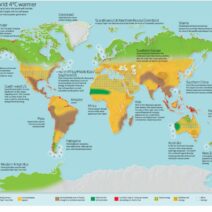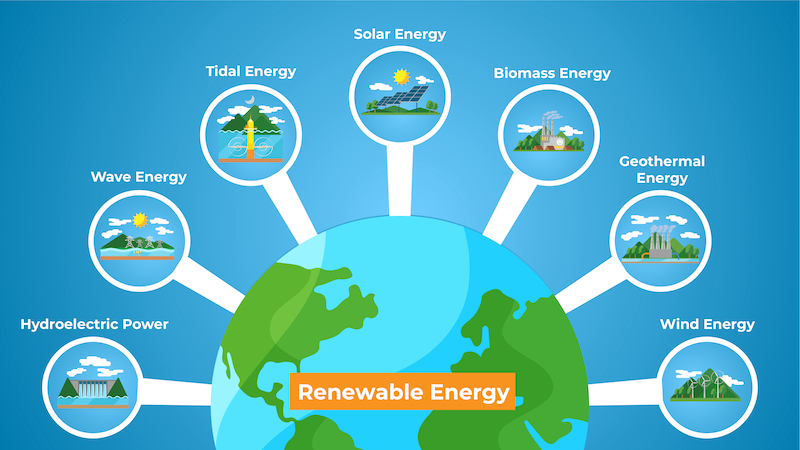The perilous state of our climate has precipitated an urgent call to action across the globe. With escalating temperatures, rising sea levels, and increasingly erratic weather patterns, the scientific community and environmental advocates alike are clamoring for transformative solutions. Among the myriad of potential remedies, renewable energy emerges as a beacon of hope. This article delves into the various renewable energy sources, elucidating their capacity to mitigate climate change while addressing the complexities of transitioning from fossil fuels.
At its core, renewable energy is derived from natural processes that are replenished at a rate equal to or faster than consumption. This category encompasses solar, wind, hydroelectric, geothermal, and biomass energy. Each source presents unique advantages and challenges but collectively harbors the potential to significantly curtail greenhouse gas emissions, the primary catalysts of climate change.
Solar energy harnesses the sun’s radiant power through photovoltaic cells or solar thermal systems. As the most abundant energy source available, it offers a versatile solution applicable in a myriad of settings. From residential rooftops to expansive solar farms, solar installations are proliferating. The efficiency of solar panels has escalated dramatically, with advancements in technology yielding significant cost reductions. Furthermore, the decentralized nature of solar power contributes to energy security, allowing communities to become self-sufficient and resilient against supply chain disruptions.
Wind energy captures kinetic energy from airflow using turbines. This renewable source has seen exponential growth, particularly in regions with optimal wind conditions. Wind farms are now established both onshore and offshore, reflecting a trend toward innovative energy generation. The ability to generate electricity without emitting carbon dioxide during operation positions wind energy as a front-runner in the renewable sector. However, it’s pertinent to address the intermittency associated with wind power, necessitating complementary energy storage solutions to maintain grid reliability.
Hydroelectric power, generated by the gravitational force of falling or flowing water, has long been a stalwart in the energy landscape. Dams and run-of-river projects harness this force to produce substantial electricity. While hydroelectricity can be immensely efficient and capable of producing consistent energy, it is not without ecological ramifications. The ecological disruption caused by damming rivers raises questions regarding biodiversity and the health of aquatic ecosystems. Therefore, a nuanced approach is required to balance energy generation with environmental stewardship.
Geothermal energy taps into the Earth’s inherent thermal energy, accessing heat stored beneath the planet’s crust. This sustainable resource is particularly effective in regions with significant tectonic activity. The advantages of geothermal energy include a small land footprint and a stable energy output that is less susceptible to fluctuations compared to solar and wind. However, initial drilling costs and site specificity can pose challenges to broader implementation.
Biomass energy—derived from organic materials such as plant matter and waste—represents another viable avenue for climate change mitigation. When utilized responsibly, biomass can be a carbon-neutral energy source. The combustion of biomass releases CO2, but this is counterbalanced by the carbon captured during the growth of the biomass itself. Nevertheless, issues related to land use, food production, and emissions from biomass burning must be addressed to ensure this energy form contributes positively to climate goals.
As we assess the potential of these renewable energy sources, it becomes evident that a multifaceted energy strategy is essential. The integration of renewables with existing infrastructure, complemented by energy efficiency measures and demand-side management, can dramatically reduce our carbon footprint. Transitioning to renewable energy systems not only diminishes greenhouse gas emissions but also enhances public health by reducing air pollutants associated with fossil fuel combustion.
Moreover, the economic implications of a renewable energy transformation cannot be overlooked. As industries worldwide pivot towards sustainable practices, the global clean energy market burgeons, generating new job opportunities and stimulating economic growth. The renewable energy sector is labor-intensive, requiring a diverse skill set ranging from engineering and technology to project management and operations. By investing in education and vocational training, communities can equip their workforce for a greener future.
However, transitioning to a renewable energy paradigm necessitates thoughtful policy frameworks and robust governmental support. Incentivizing research and development, facilitating grid modernization, and implementing supportive regulatory environments are vital for the proliferation of renewable technologies. Furthermore, public participation and community engagement will be crucial to garner support for renewable initiatives.
The intersection of renewable energy and climate action draws a clear line: the trajectory of our climate is contingent upon our investments today. The cumulative effects of adopting renewable energy sources can lead to significant declines in global carbon emissions, imparting long-term benefits to the planet. Countries leading the charge in renewable adoption are not just making strides in energy independence; they are contributing to the stabilization of our climate.
In conclusion, the question, “Can renewable energy save the climate?” is met with a resounding affirmation from the scientific community. As the challenges posed by climate change escalate, the imperative for a collective transition towards renewable energy is more pronounced than ever. The path forward is fraught with complexities, but with commitment and innovation, we can harness the power of renewables to forge a sustainable future that mitigates climate impact while fostering economic resilience and environmental integrity.



